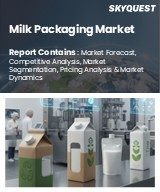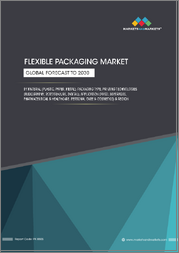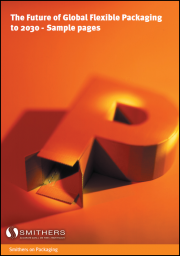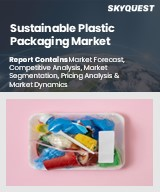
|
시장보고서
상품코드
1766093
세계의 BOPP 포장 필름 시장 예측 - 제품별, 재료별, 두께별, 용도별, 최종 사용자별, 지역별 분석(-2032년)BOPP Packaging Film Market Forecasts to 2032 - Global Analysis By Product (Wraps, Bags & Pouches, Tapes & Labels, Metallized films and Other Products), Material, Thickness, Application, End User and By Geography |
||||||
Stratistics MRC에 따르면 BOPP 포장 필름 세계 시장은 2025년 278억 6,000만 달러, 예측 기간 동안 CAGR 7.6%로 성장하고 2032년에는 465억 3,000만 달러에 이를 전망입니다. BOPP 필름은 뛰어난 내습성, 인쇄 적성, 치수 안정성에서 식품, 담배, 섬유 제품, 소비재 포장에 자주 사용되고 있습니다.
FMCG와 전자상거래 수요 증가
다양한 산업에서 강도가 있고 경량으로 경제적인 포장에 대한 수요가 BOPP 필름의 사용을 뒷받침하고 있습니다. 배송을 보장하기 위한 유연하고 보호적인 포장 옵션의 필요성이 높아지고 있습니다.
환경 우려와 규제 압력
비생분해성 BOPP 필름의 사용은 일회용 플라스틱에 관한 법률을 강화하는 세계 정부에 의해 제한되고 있습니다. 운영 비용은 재활용 법률과 지속 가능성 지침을 준수하는 비용에 의해 증가합니다. 플라스틱 기반 솔루션은 소비자의 의식과 지속 가능한 포장에 대한 선호도로 인해 더 이상 사용되지 않으므로 규제 변화와 환경 책임으로 인해 시장 확대가 제한됩니다.
지속 가능한 솔루션으로 이동
BOPP 필름은 기존 플라스틱 포장보다 이산화탄소 배출량이 적고, 재활용도 가능합니다. 늘어나는 결과, 시장은 확대되고 있습니다. BOPP 필름은 보다 적은 재료로 보존 기간을 연장할 수 있기 때문에 소매업체에게도 지지되고 있습니다.
원료 가격 변동
중요한 원료 중 하나인 폴리프로필렌은 원유에 의존하기 때문에 전 세계 원유 가격 변동의 영향을 받기 쉽습니다. 예산 편성과 공급망의 계획은 빈번한 가격 변동에 의해 더욱 방해받습니다.
COVID-19의 영향
COVID-19의 유행은 BOPP 포장 필름 시장에 큰 영향을 주었으며 공급망의 혼란과 원료 부족을 일으켰습니다. 그러나 봉쇄 기간 동안 포장 제품에 대한 소비자 의존도가 높아지면서 식품, 의약품, 개인 관리와 같은 필수 부문에서 수요가 급증했습니다.전자상거래 붐은 내구성이 뛰어난 경량 포장 솔루션의 필요성을 더욱 가속화했습니다.
금속화 필름 부문이 예측 기간 동안 최대가 될 전망
금속화 필름 부문은 습기, 산소, 빛에 대한 우수한 장벽 특성으로 인해 예측 기간 동안 최대 시장 점유율을 차지할 것으로 예측됩니다. 또한 소매 현장에서 소비자의 주목을 받고 있습니다. 또한 금속화 BOPP 필름은 알루미늄 포일을 대체하는 비용 효율적인 대체품을 제공하여 포장비 전체를 삭감합니다.
전자 및 전기 부문은 예측 기간 중 가장 높은 CAGR이 예상된다.
예측 기간 동안 전자 및 전기 부문은 보호, 경량, 내정전기성 포장 솔루션에 대한 수요로 인해 가장 높은 성장률을 보일 것으로 예측됩니다. 또한, 제품 정보의 시인성을 높이고 있습니다. 또한 전자기기의 전자상거래가 확대되어 내구성이 높고 매력적인 포장에 대한 요구가 높아지고 있는 것도 이 부문의 장점이 되고 있습니다.
최대 점유율 지역
예측 기간 동안 아시아태평양은 음식, 퍼스널케어, 제약 산업 수요 증가로 최대 시장 점유율을 차지할 것으로 예측됩니다. 뿐만 아니라 지속가능하고 가벼운 소재로의 전환이 시장 도입을 뒷받침하고 있습니다.
CAGR이 가장 높은 지역
예측 기간 동안 편리하고 재실행 가능한 포장에 대한 수요가 증가함에 따라 북미가 가장 높은 CAGR을 나타낼 것으로 예측됩니다. 그러나 엄격한 환경 규제와 플라스틱 폐기물 감소에 강력하게 초점을 맞추고 있기 때문에 적극적인 확장이 제한되어 있습니다.
무료 맞춤형 서비스
이 보고서를 구독하는 고객은 다음 무료 맞춤설정 옵션 중 하나를 사용할 수 있습니다.
- 기업 프로파일
- 추가 시장 진출기업의 종합적 프로파일링(3개사까지)
- 주요 기업의 SWOT 분석(3개사까지)
- 지역 세분화
- 고객의 관심에 응한 주요국 시장 추정, 예측, CAGR(주 : 타당성 확인에 따름)
- 경쟁 벤치마킹
- 제품 포트폴리오, 지리적 존재, 전략적 제휴를 통한 주요 기업 벤치마킹
목차
제1장 주요 요약
제2장 서문
- 개요
- 이해관계자
- 조사 범위
- 조사 방법
- 데이터 마이닝
- 데이터 분석
- 데이터 검증
- 조사 접근
- 조사 자료
- 1차 조사 자료
- 2차 조사 자료
- 전제조건
제3장 시장 동향 분석
- 소개
- 성장 촉진요인
- 억제요인
- 기회
- 위협
- 제품분석
- 용도 분석
- 최종 사용자 분석
- 신흥 시장
- COVID-19의 영향
제4장 Porter's Five Forces 분석
- 공급기업의 협상력
- 구매자의 협상력
- 대체품의 위협
- 신규 참가업체의 위협
- 경쟁 기업간 경쟁 관계
제5장 세계의 BOPP 포장 필름 시장 : 제품별
- 소개
- 랩
- 가방 & 파우치
- 테이프 및 라벨
- 금속화 필름
- 펄 컬러
- 기타
제6장 세계의 BOPP 포장 필름 시장 : 재료별
- 소개
- 필름 변형
- 물리 포맷
제7장 세계의 BOPP 포장 필름 시장 : 두께별
- 소개
- 15마이크로미터 이하
- 15-30마이크로미터
- 30-45마이크로미터
- 45마이크로미터 이상
제8장 세계의 BOPP 포장 필름 시장 : 용도별
- 소개
- 포장
- 라벨링
- 라미네이션
- 인쇄
- 기타
제9장 세계의 BOPP 포장 필름 시장 : 최종 사용자별
- 소개
- 음식
- 의약품 및 의료
- 퍼스널케어&화장품
- 전자?전기
- 담배
- 기타
제10장 세계의 BOPP 포장 필름 시장 :지역별
- 소개
- 북미
- 미국
- 캐나다
- 멕시코
- 유럽
- 독일
- 영국
- 이탈리아
- 프랑스
- 스페인
- 기타 유럽
- 아시아태평양
- 일본
- 중국
- 인도
- 호주
- 뉴질랜드
- 한국
- 기타 아시아태평양
- 남미
- 아르헨티나
- 브라질
- 칠레
- 기타 남미
- 중동 및 아프리카
- 사우디아라비아
- 아랍에미리트(UAE)
- 카타르
- 남아프리카
- 기타 중동 및 아프리카
제11장 주요 개발
- 계약, 파트너십, 협업, 합작투자
- 인수와 합병
- 신제품 발매
- 사업 확대
- 기타 주요 전략
제12장 기업 프로파일링
- Jindal Poly Films Ltd.
- Cosmo Films Ltd.
- Taghleef Industries LLC
- SRF Limited
- Uflex Ltd.
- CCL Industries
- Toray Industries
- NAN YA Plastics Corporation
- Vacmet India Limited
- Treofan Group
- Innovia Films
- SIBUR
- Oben Holding Group
- Polibak
- Inteplast Group
- FlexFilm International
- Mitsui Chemicals Tohcello, Inc.
- Bruckner Group GmbH
According to Stratistics MRC, the Global BOPP Packaging Film Market is accounted for $27.86 billion in 2025 and is expected to reach $46.53 billion by 2032 growing at a CAGR of 7.6% during the forecast period. The thermoplastic polymer film known as BOPP (Biaxially Orientated Polypropylene) packaging film is created by stretching polypropylene both transversely and machine-wise. Its strength, clarity, and barrier qualities are improved by this orienting procedure, which makes it perfect for packaging applications. BOPP films are commonly used to wrap food, tobacco, textiles, and consumer items because of their exceptional moisture resistance, printability, and dimensional stability. BOPP films are a common, environmentally responsible option in the packaging business since they are recyclable and facilitate high-speed processing. They come in a variety of varieties, including heat-sealable, pearlised, and metallised.
Market Dynamics:
Driver:
Rising demand in FMCG & e-commerce
The demand for packaging that is strong, lightweight, and economical in various industries encourages the use of BOPP film. BOPP films are preferred by FMCG industries due to their superior printability and moisture resistance, which improves the shelf appeal of their products. The expansion of e-commerce raises the need for flexible and protective packaging options to guarantee the safe delivery of goods. BOPP films satisfy the fast-paced needs of both industries by providing exceptional strength and clarity. Manufacturers are therefore increasing their production capabilities to satisfy the soaring demand worldwide.
Restraint:
Environmental concerns & regulatory pressure
The usage of non-biodegradable BOPP films is being restricted by governments around the world that are enforcing stronger laws on single-use plastics. The demand for traditional BOPP films declines as a result of these rules, which push producers to look for more environmentally friendly alternatives. Operating costs are increased by the cost of adhering to recycling laws and sustainability guidelines. The usage of plastic-based solutions is further discouraged by consumer awareness and a preference for sustainable packaging. As a result, changing regulations and environmental responsibility limit market expansion.
Opportunity:
Shift to sustainable solutions
BOPP films have a lower carbon impact than conventional plastic packaging and are recyclable. This encourages the food, beverage, and personal care sectors to adopt sustainable packaging substitutes. The market is expanding as a result of manufacturers' growing investments in bio-based BOPP films. Because BOPP films can increase shelf life while using less material, retailers also favour them. All things considered, the sustainability movement is spurring BOPP packaging film innovation and market growth.
Threat:
Raw material price fluctuations
One important input, polypropylene, is dependent on crude oil, which makes it susceptible to fluctuations in the world's oil prices. These cost variances cause producers' profit margins to shrink and end users' prices to become unpredictable. Budgeting and supply chain planning are further hampered by frequent price changes. It is more difficult for small and medium-sized businesses to absorb expense increases. All things considered, this volatility jeopardises market stability and expansion prospects.
Covid-19 Impact
The COVID-19 pandemic significantly impacted the BOPP packaging film market, causing supply chain disruptions and raw material shortages. However, demand surged in essential sectors such as food, pharmaceuticals, and personal care due to increased consumer reliance on packaged goods during lockdowns. The e-commerce boom further accelerated the need for durable, lightweight packaging solutions. Although industrial slowdowns affected non-essential applications, the overall market demonstrated resilience, with manufacturers adapting quickly to meet the evolving packaging demands of a pandemic-driven economy.
The metallized films segment is expected to be the largest during the forecast period
The metallized films segment is expected to account for the largest market share during the forecast period, due to its superior barrier properties against moisture, oxygen, and light. These films enhance product shelf life, making them ideal for food and pharmaceutical packaging. Their glossy finish and excellent printability boost visual appeal, attracting consumer attention in retail settings. Additionally, metallized BOPP films offer cost-effective alternatives to aluminum foil, reducing overall packaging expenses. Growing demand for sustainable and lightweight packaging further accelerates their adoption across industries.
The electronics & electrical segment is expected to have the highest CAGR during the forecast period
Over the forecast period, the electronics & electrical segment is predicted to witness the highest growth rate, due to demand for protective, lightweight, and static-resistant packaging solutions. BOPP films provide excellent insulation and moisture barrier properties, crucial for safeguarding delicate electronic components. Their clarity and printability enhance branding and product information visibility. The segment also benefits from the growing e-commerce of electronic gadgets, increasing the need for durable and attractive packaging. Additionally, BOPP films' recyclability supports sustainability goals in the electronics industry.
Region with largest share:
During the forecast period, the Asia Pacific region is expected to hold the largest market share due to rising demand from food and beverage, personal care, and pharmaceutical industries. Countries like China and India are leading the charge due to expanding retail sectors, growing middle-class populations, and increasing consumption of packaged goods. Additionally, the shift towards sustainable and lightweight materials boosts market adoption. Government initiatives promoting eco-friendly packaging further contribute to the regional expansion, making Asia Pacific the fastest-growing market globally.
Region with highest CAGR:
Over the forecast period, the North America region is anticipated to exhibit the highest CAGR, owing to increasing demand for convenient, resealable packaging. The market here is mature, with established players focusing on innovation and recyclability to meet sustainability goals. However, stringent environmental regulations and a strong focus on reducing plastic waste limit aggressive expansion. Consumer preference for premium and functional packaging supports steady demand, but the overall growth rate remains slower than in Asia Pacific.
Key players in the market
Some of the key players profiled in the BOPP Packaging Film Market include Jindal Poly Films Ltd., Cosmo Films Ltd., Taghleef Industries LLC, SRF Limited, Uflex Ltd., CCL Industries, Toray Industries, NAN YA Plastics Corporation, Vacmet India Limited, Treofan Group, Innovia Films, SIBUR, Oben Holding Group, Polibak, Inteplast Group, FlexFilm International, Mitsui Chemicals Tohcello, Inc. and Bruckner Group GmbH.
Key Developments:
In August 2024, Jindal Poly Films Ltd. announced a technology partnership with DIC Corporation (Japan) to develop and commercialize functional CPP (cast polypropylene) film in India-technology licensing, production collaboration, and potential joint venture scope.
In January 2024, Cosmo Films launched metalised capacitor-grade BOPP films for AC/DC capacitors in the electronics sector. Manufactured under clean-room conditions, these films range from 2.5-12 µm in thickness with an annual capacity of 750 MT.
In July 2023, Jindal Poly Films Ltd. completed acquisition of 100% stake in JPF Netherlands Investment B.V., a Netherlands based holding company owning packaging film manufacturers in France, Italy and the UK. This expanded Jindal's global footprint in specialty, nylon, coated, and metalized films
Products Covered:
- Wraps
- Bags & Pouches
- Tapes & Labels
- Metallized films
- Pearlized
- Other Products
Materials Covered:
- Film Variants
- Physical Format
Thicknesses Covered:
- Below 15 µm
- 15-30 µm
- 30-45 µm
- Above 45 µm
Applications Covered:
- Packaging
- Labelling
- Lamination
- Printing
- Other Applications
End Users Covered:
- Food & Beverage
- Pharmaceuticals & Medical
- Personal Care & Cosmetics
- Electronics & Electrical
- Tobacco
- Other End Users
Regions Covered:
- North America
- US
- Canada
- Mexico
- Europe
- Germany
- UK
- Italy
- France
- Spain
- Rest of Europe
- Asia Pacific
- Japan
- China
- India
- Australia
- New Zealand
- South Korea
- Rest of Asia Pacific
- South America
- Argentina
- Brazil
- Chile
- Rest of South America
- Middle East & Africa
- Saudi Arabia
- UAE
- Qatar
- South Africa
- Rest of Middle East & Africa
What our report offers:
- Market share assessments for the regional and country-level segments
- Strategic recommendations for the new entrants
- Covers Market data for the years 2024, 2025, 2026, 2028, and 2032
- Market Trends (Drivers, Constraints, Opportunities, Threats, Challenges, Investment Opportunities, and recommendations)
- Strategic recommendations in key business segments based on the market estimations
- Competitive landscaping mapping the key common trends
- Company profiling with detailed strategies, financials, and recent developments
- Supply chain trends mapping the latest technological advancements
Free Customization Offerings:
All the customers of this report will be entitled to receive one of the following free customization options:
- Company Profiling
- Comprehensive profiling of additional market players (up to 3)
- SWOT Analysis of key players (up to 3)
- Regional Segmentation
- Market estimations, Forecasts and CAGR of any prominent country as per the client's interest (Note: Depends on feasibility check)
- Competitive Benchmarking
- Benchmarking of key players based on product portfolio, geographical presence, and strategic alliances
Table of Contents
1 Executive Summary
2 Preface
- 2.1 Abstract
- 2.2 Stake Holders
- 2.3 Research Scope
- 2.4 Research Methodology
- 2.4.1 Data Mining
- 2.4.2 Data Analysis
- 2.4.3 Data Validation
- 2.4.4 Research Approach
- 2.5 Research Sources
- 2.5.1 Primary Research Sources
- 2.5.2 Secondary Research Sources
- 2.5.3 Assumptions
3 Market Trend Analysis
- 3.1 Introduction
- 3.2 Drivers
- 3.3 Restraints
- 3.4 Opportunities
- 3.5 Threats
- 3.6 Product Analysis
- 3.7 Application Analysis
- 3.8 End User Analysis
- 3.9 Emerging Markets
- 3.10 Impact of Covid-19
4 Porters Five Force Analysis
- 4.1 Bargaining power of suppliers
- 4.2 Bargaining power of buyers
- 4.3 Threat of substitutes
- 4.4 Threat of new entrants
- 4.5 Competitive rivalry
5 Global BOPP Packaging Film Market, By Product
- 5.1 Introduction
- 5.2 Wraps
- 5.3 Bags & Pouches
- 5.4 Tapes & Labels
- 5.5 Metallized films
- 5.6 Pearlized
- 5.7 Other Products
6 Global BOPP Packaging Film Market, By Material
- 6.1 Introduction
- 6.2 Film Variants
- 6.3 Physical Format
7 Global BOPP Packaging Film Market, By Thickness
- 7.1 Introduction
- 7.2 Below 15 µm
- 7.3 15-30 µm
- 7.4 30-45 µm
- 7.5 Above 45 µm
8 Global BOPP Packaging Film Market, By Application
- 8.1 Introduction
- 8.2 Packaging
- 8.3 Labeling
- 8.4 Lamination
- 8.5 Printing
- 8.6 Other Applications
9 Global BOPP Packaging Film Market, By End User
- 9.1 Introduction
- 9.2 Food & Beverage
- 9.3 Pharmaceuticals & Medical
- 9.4 Personal Care & Cosmetics
- 9.5 Electronics & Electrical
- 9.6 Tobacco
- 9.7 Other End Users
10 Global BOPP Packaging Film Market, By Geography
- 10.1 Introduction
- 10.2 North America
- 10.2.1 US
- 10.2.2 Canada
- 10.2.3 Mexico
- 10.3 Europe
- 10.3.1 Germany
- 10.3.2 UK
- 10.3.3 Italy
- 10.3.4 France
- 10.3.5 Spain
- 10.3.6 Rest of Europe
- 10.4 Asia Pacific
- 10.4.1 Japan
- 10.4.2 China
- 10.4.3 India
- 10.4.4 Australia
- 10.4.5 New Zealand
- 10.4.6 South Korea
- 10.4.7 Rest of Asia Pacific
- 10.5 South America
- 10.5.1 Argentina
- 10.5.2 Brazil
- 10.5.3 Chile
- 10.5.4 Rest of South America
- 10.6 Middle East & Africa
- 10.6.1 Saudi Arabia
- 10.6.2 UAE
- 10.6.3 Qatar
- 10.6.4 South Africa
- 10.6.5 Rest of Middle East & Africa
11 Key Developments
- 11.1 Agreements, Partnerships, Collaborations and Joint Ventures
- 11.2 Acquisitions & Mergers
- 11.3 New Product Launch
- 11.4 Expansions
- 11.5 Other Key Strategies
12 Company Profiling
- 12.1 Jindal Poly Films Ltd.
- 12.2 Cosmo Films Ltd.
- 12.3 Taghleef Industries LLC
- 12.4 SRF Limited
- 12.5 Uflex Ltd.
- 12.6 CCL Industries
- 12.7 Toray Industries
- 12.8 NAN YA Plastics Corporation
- 12.9 Vacmet India Limited
- 12.10 Treofan Group
- 12.11 Innovia Films
- 12.12 SIBUR
- 12.13 Oben Holding Group
- 12.14 Polibak
- 12.15 Inteplast Group
- 12.16 FlexFilm International
- 12.17 Mitsui Chemicals Tohcello, Inc.
- 12.18 Bruckner Group GmbH



















